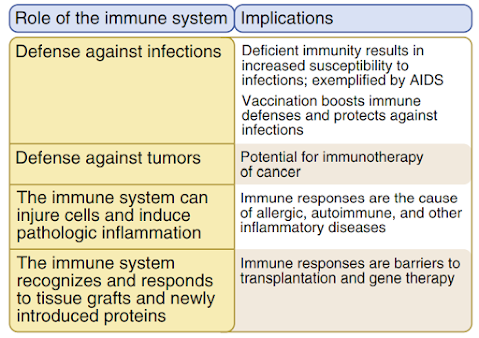EMPHYSEMA CAUSES SYMPTOMS AND TREATMENT!!!
EMPHYSEMA
DEFINITION
Emphysema is characterized by permanent enlargement of the air spaces distal to the terminal bronchioles, accompanied by destruction of their walls without significant fibrosis.
It is one of the diseases that make up COPD . It is mostly caused by smoking and other reasons also which cannot be diagnosed.
EPIDEMIOLOGY
The prevalence of emphysema in the U.S is about 14 million.
There has been an increase in the cases of emphysema in the recent years due to the increase in the number of smokers.
Another factor that plays role is environmental pollution and sometimes genetic factors also come into play.
PATHOPHYSIOLOGY
Inhaled cigarette smoke and other noxious particles cause lung damage and inflammation, which, particularly in patients with a genetic predisposition, result in parenchymal destruction (emphysema) and airway disease (bronchiolitis and chronic bronchitis).
Factors that influence the development of emphysema include the following
1. Inflammatory cells and mediators: A wide variety of inflammatory mediators have been shown to be increased (including leukotriene B4, IL-8, TNF, and others) that attract more inflammatory cells from the circulation (chemotactic factors), amplify the inflammatory process (proinflammatory cytokines), and induce structural changes (growth factors).
2. Protease–anti-protease imbalance: Several proteases are released from the inflammatory cells and epithelial cells that break down connective tissues.
4. Airway infection: Although infection is not thought to play a role in the initiation of tissue destruction, bacterial and/or viral infections cause acute exacerbations.
5. Protease-mediated damage of extracellular matrix has a central role in the airway obstruction seen in emphysema. Small airways are normally held open by the elastic recoil of the lung parenchyma, and the loss of elastic tissue in the walls of alveoli that surround respiratory bronchioles reduces radial traction and thus causes the respiratory bronchioles to collapse during expiration.
CLASSIFICATION
It is classified according to its anatomic distribution within the lobule. There are four major types of emphysema:
(1) centriacinar
(2) panacinar,
(3) distal acinar, and
(4) irregular.
Only the first two types cause clinically significant airway obstruction, with centriacinar emphysema being about 20 times more common than panacinar disease.
CENTRIACINAR OR CENTRILOBULAR EMPHYSEMA
The distinctive feature of centriacinar (centrilobular)emphysema is the pattern of involvement of the lobules: The central or proximal parts of the acini, formed by respiratory bronchioles, are affected, while distal alveoli are spared.
Thus, both emphysematous and normal air spaces exist within the same acinus and lobule.
The lesions are more common and severe in the upper lobes, particularly in the apical segments.
This type of emphysema is most commonly seen as a consequence of cigarette smoking in people who do not have congenital deficiency of α1-antitrypsin
In panacinar (pan lobular) emphysema, the acini are uniformly enlarged, from the level of the respiratory bronchiole to the terminal blind alveoli.
panacinar emphysema tends to occur more commonly in the lower lung zones and is the type of emphysema that occurs in α1-antitrypsin deficiency.
DISTAL ACINAR OR PARASEPTAL EMPHYSEMA
In distal acinar (paraseptal) emphysema, the proximal portion of the acinus is normal but the distal part is primarily involved.
Predisposes to spontaneous pneumothorax
Adjacent to foci of fibrosis
Least common
IRREGULAR EMPHYSEMA
Irregular emphysema, so named because the acinus is irregularly involved, is almost invariably associated with scarring, such as that resulting from healed inflammatory diseases.
It is although clinically asymptomatic, this may be the most common form of emphysema.
Common around scar tissue
CLINICAL FEATURES
Dyspnea
Weight loss
Cough with or without expectoration
Wheezing
Hypercapnia
Hypoxia
Barrel chest
Death from emphysema occurs due to:
Pulmonary failure
Respiratory acidosis
Hypoxia
Coma
Cor pulmononale( right sided heart failure)
Several conditions resemble emphysema only superficially such as:
Compensatory emphysema
Obstructive over inflation
Bullous emphysema
Mediastinal (interstitial) emphysema
DIAGNOSIS
PFT
HRCT
Chest X Ray
Arterial blood gases analysis
Sputum examination
Alpha1 antitripsin serum levels
Complete blood count
Radiographic finding
The disease presents with nonspecific symptoms, and hence, it has broad differential diagnoses. These include:
Chronic obstructive asthma
Chronic bronchitis with normal spirometry
Cystic fibrosis
Bronchopulmonary mycosis
Central airway obstruction
Bronchiectasis
Heart failure
Tuberculosis
Constrictive bronchiolitis
Anemia
Complications
Pulmonary hypertension
Cor pulmonale
Chronic respiratory failure
Spontaneous pneumothorax
There is no known, definitive treatment that can modify the disease process. However, risk-factor modification and management of symptoms have been proven effective in slowing the disease progression and optimizing the quality of living.
Based on the symptoms and number of exacerbations, we can divide the disease into 4 COPD GOLD stages and modify the treatment accordingly.
Medical therapy
Supportive therapy
Interventional therapy
Management of a Patient with COPD Exacerbation.


Comments
Post a Comment